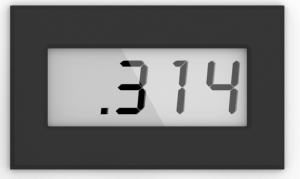Difference between revisions of "Panel Meter"
m |
|||
| Line 4: | Line 4: | ||
The instrument can show bipolar voltages, i.e. it can show values in the whole logic level domain of [[±1]]. | The instrument can show bipolar voltages, i.e. it can show values in the whole logic level domain of [[±1]]. | ||
| + | |||
| + | == Text from the whitepaper == | ||
| + | The ANALOG THING contains an instrument which is used as voltmeter in several cases and | ||
| + | depends on the switch mode setting (operation mode). In mode COEFF the coefficients can be | ||
| + | setup with the eight potentiometers while the COEFFICIENT switch chooses one of the eight | ||
| + | COEFFs which value is displayed on the voltmeter. This allows an easy setup. | ||
| + | |||
| + | In mode REP or REPF the current OP TIME value is shown or can be changed with control via | ||
| + | the voltmeter. In all other positions except OFF the voltmeter shows a voltage (or value) which | ||
| + | can be feeded into the OUT jack U on the front panel with a patch cable to a specific input or | ||
| + | output. | ||
| + | |||
[[Category:Components of The Analog Thing]] | [[Category:Components of The Analog Thing]] | ||
Revision as of 03:38, 24 July 2021
A third party voltage instrument is part of The Analog Thing. It is located in the lower left on the upper board and a central part of the board. Unfortunately it is not analog but digital, in order to be cheap (price around 5 Euro). The instrument is a PM438 and normally shows the voltage on the output channel U.
The instrument can show bipolar voltages, i.e. it can show values in the whole logic level domain of ±1.
Text from the whitepaper
The ANALOG THING contains an instrument which is used as voltmeter in several cases and depends on the switch mode setting (operation mode). In mode COEFF the coefficients can be setup with the eight potentiometers while the COEFFICIENT switch chooses one of the eight COEFFs which value is displayed on the voltmeter. This allows an easy setup.
In mode REP or REPF the current OP TIME value is shown or can be changed with control via the voltmeter. In all other positions except OFF the voltmeter shows a voltage (or value) which can be feeded into the OUT jack U on the front panel with a patch cable to a specific input or output.
